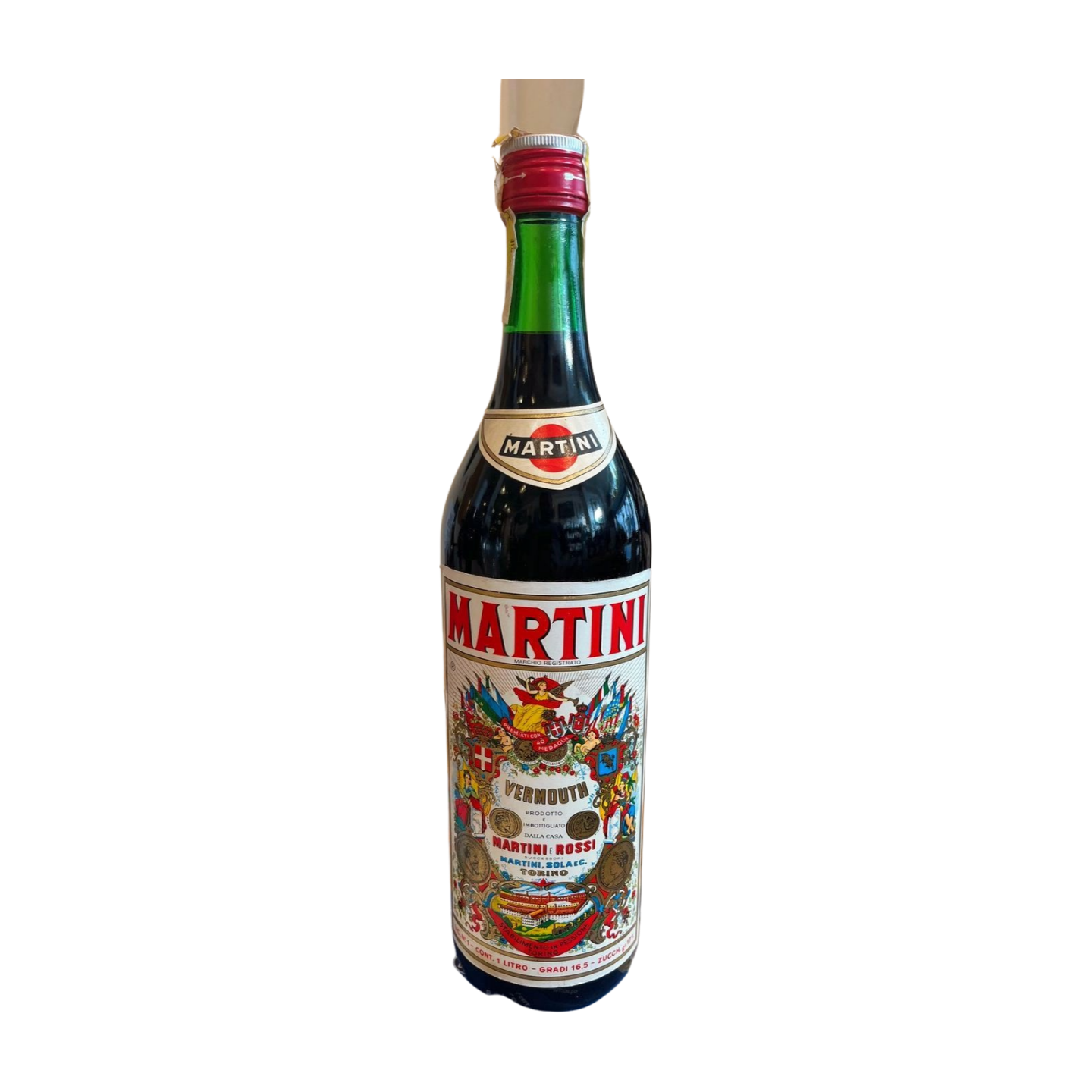Martini & Rossi's Vermouth, particularly the Rosso variety, has a rich history that traces back to its origins in the 19th century. The 1970s marked a significant period for this Italian sweet vermouth, during which it became a staple in cocktail culture and was known for its unique flavor profile and manufacturing techniques.
Martini Rosso is characterized by its deep scarlet color and a complex flavor profile that combines sweetness with herbal notes. The vermouth is crafted from a blend of wines infused with a secret mix of over 40 botanicals, including Italian herbs like sage and savory, as well as exotic woods. This combination results in a rich, aromatic drink with a balance of bitter and sweet flavors, making it versatile for various cocktails or as a standalone aperitif.
In the 1970s, Martini Rosso was particularly noted for its pronounced herbal character, which was enhanced by the specific manufacturing techniques used at the time. The blending process, a closely guarded secret, involved traditional methods that emphasized the quality of the botanicals and the wines used, creating a product that was both rich and nuanced.
During the 1970s, Martini Rosso gained popularity not only as an ingredient in cocktails but also as a refreshing drink on its own. One of the notable cocktails from this era was the Martini Rosso & Tonic, which became a fashionable choice. This drink is made by mixing equal parts of Martini Rosso and tonic water, served over ice and garnished with an orange wheel. The combination highlights the vermouth's orange notes and herbal complexity, making it a refreshing and flavorful option for aperitivo.
The 1970s also saw an increase in the popularity of vermouth as a key ingredient in classic cocktails, such as the Negroni and the Manhattan, where its sweet and herbal notes complemented the other spirits beautifully. The drink was often paired with simple nibbles like olives or salted almonds, enhancing the overall drinking experience.
## Manufacturing Techniques
The production of Martini Rosso in the 1970s was marked by traditional methods that have evolved over the years. The art of blending was a skill passed down through generations, ensuring that each batch maintained the brand's high standards. The meticulous selection of botanicals and the aging process contributed to the depth of flavor found in the vermouth from this era.
Today, while the core recipe remains unchanged, modern production techniques have introduced efficiencies and consistency that were not present in the past. The emphasis on quality control and the sourcing of ingredients has become more standardized, which, while ensuring a reliable product, may lack some of the artisanal nuances that characterized the 1970s version.
In summary, Martini & Rossi's Vermouth from the 1970s is remembered for its intense flavor, unique herbal character, and its role in popular cocktails of the time. The blending techniques and the quality of ingredients used during this period contributed to a distinctive product that continues to influence the world of vermouth today.







